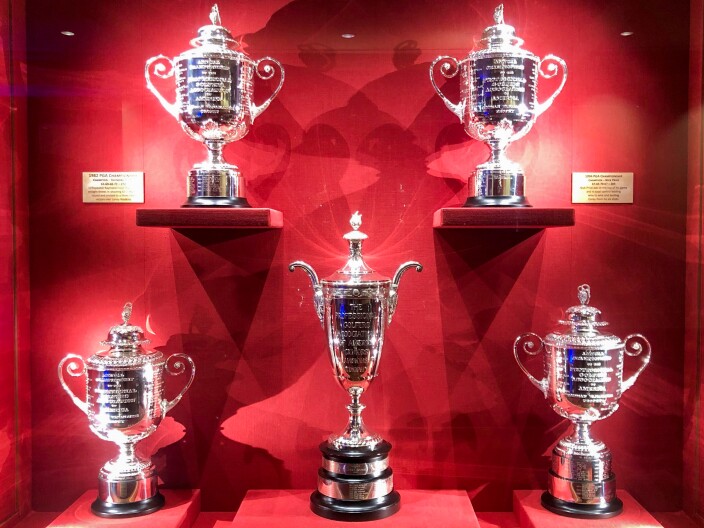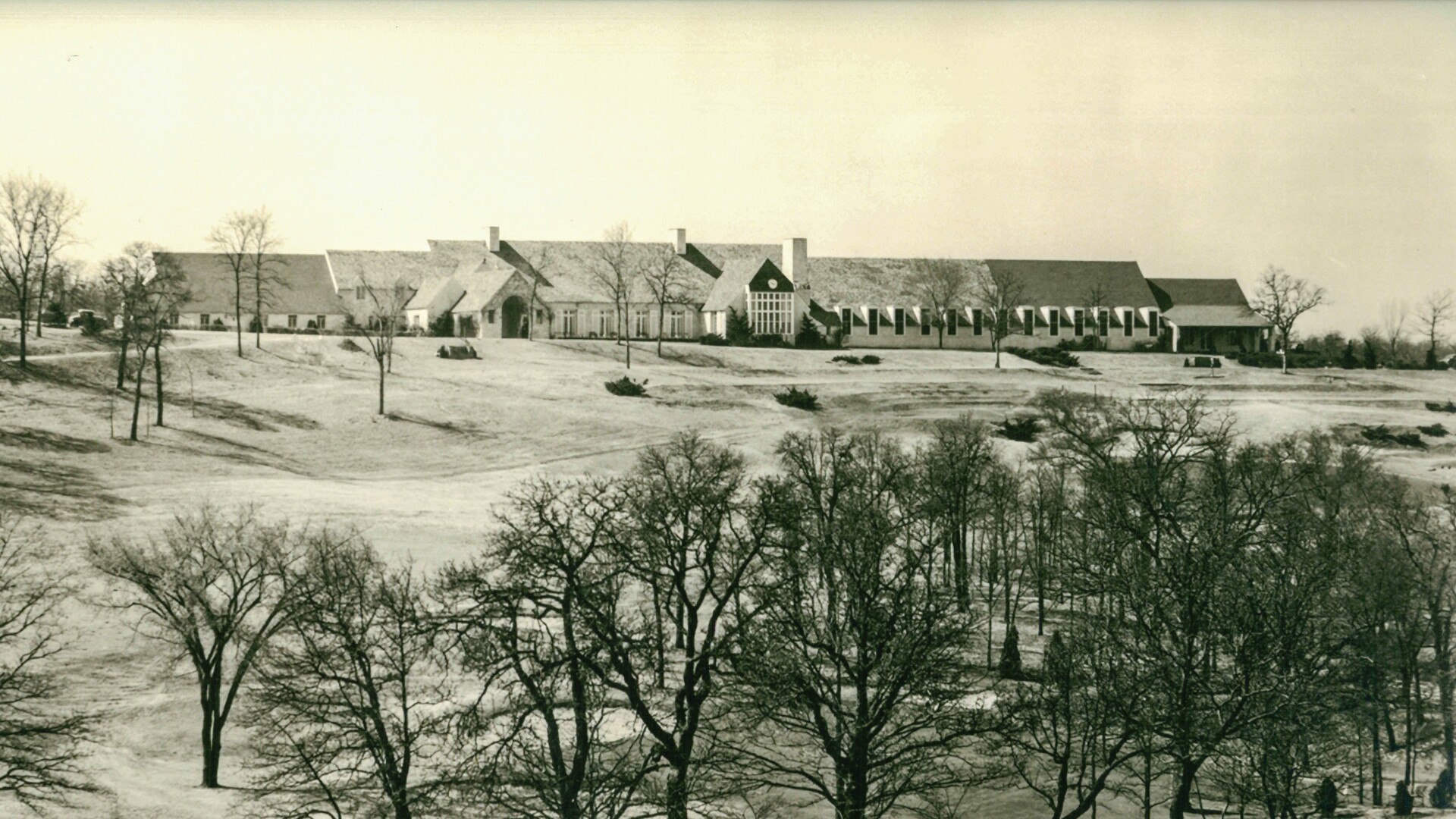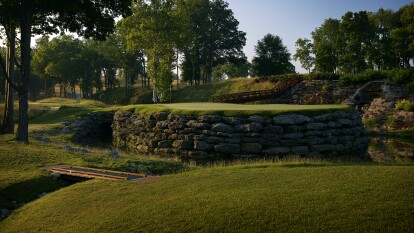The History
The Clubhouse at Southern Hills Country Club was destined to be the largest construction job in the Tulsa area in the 15 years of the Great Depression and World War II from 1930 to 1945. Donald McCormick and John Forsyth took the job as a joint venture. A building resembling a 17th-Century English country manor was decided upon.
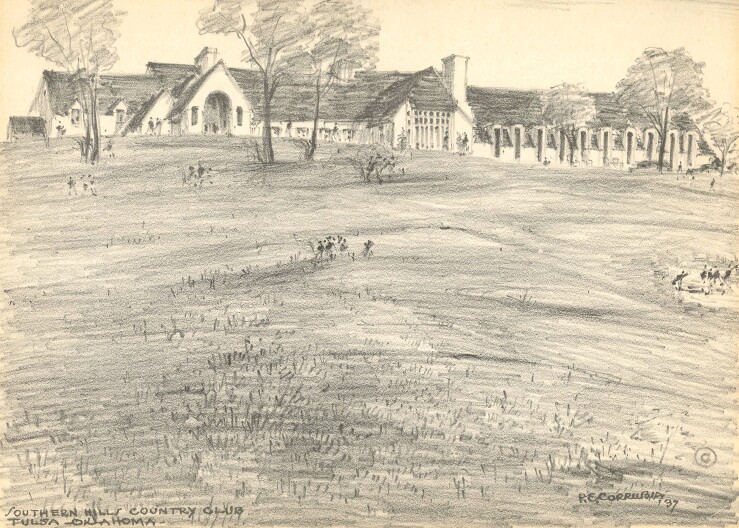
Heavy timbers were in ample supply and would become the dominant feature of the country house design. The exterior limestone came from a quarry just east of the city. High, vaulted ceilings are prevalent. Sitting on the highest point of the property caused numerous problems, one of which was pumping water up the hill from wells near the Arkansas River.
The actual construction of the 10,000 square foot building took only 10 months. However, it has been expanded many times over the years and now encompasses over 70,000 square feet. Even with that growth, it has not lost its old-country-home charm.
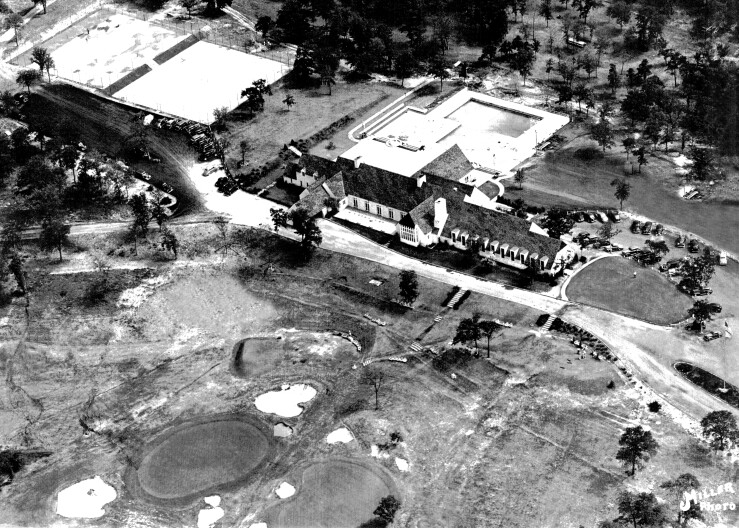
Why was the clubhouse built on top of a hill?
When the Southern Hills clubhouse was built in 1935, it was a difficult task getting materials along with people up a long dirt road that made its way up to a high hill.
Many wondered why such a difficult task was undertaken since there was ample room at the bottom of the hill to build a Clubhouse.
The answer is simple.
As a condition of his donating 300 acres of land south of Tulsa during the middle of the Great Depression to a group of forward-looking businessmen who wanted to build a golf course and country club, philanthropist Waite Phillips had this condition:
“As part of the proposal, I stipulate that the main clubhouse must be located approximately at the center of the south line of the acreage used for club purposes. This location was recommended as most desirable by Perry Maxell when he made a preliminary survey a year or two ago.”
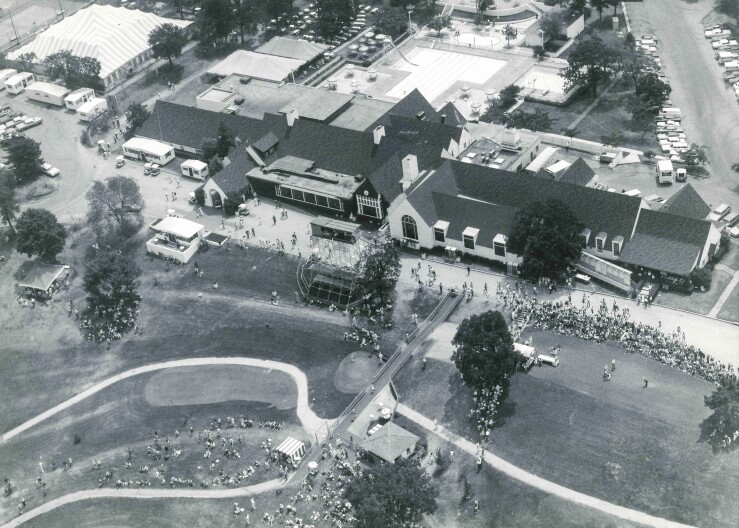
That south line was the highest point on the property and looked directly at downtown Tulsa.
There were some who thought the better plan would be to place the clubhouse on the north end of the property where it was flatter and had better access from town. Fortunately, the Phillips and Maxwell plan prevailed and one of the most iconic opening tee shots and challenging finishing holes in all of golf was created and survives to this day.
Why is the clubhouse pink?
There is no definitive answer. We do know that someone wanted it pink, so it’s pink. What is known is that the same architect that designed Southern Hills previously designed a home for one of the founders. The home was painted red and then whitewashed to reveal a pink tone. Southern Hills followed and looked similar.
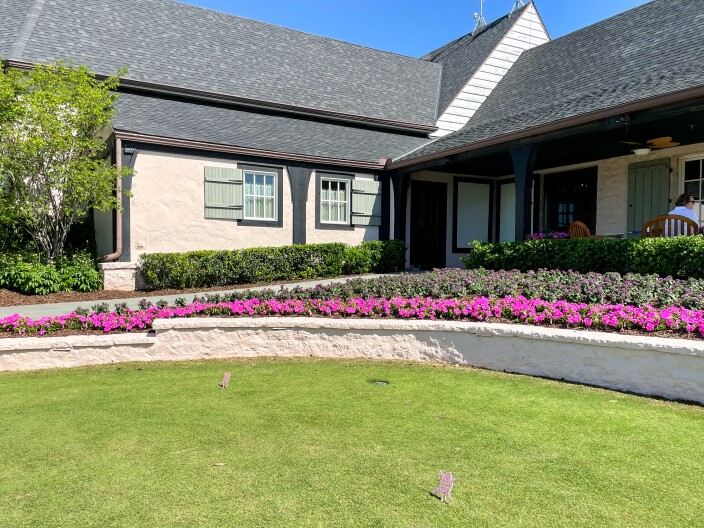
So, maybe we know how it became pink, but not why pink was chosen. The most common answer is that the wife of one of the founders loved the founder's home and thought the clubhouse would look great the same way. It’s been the same color ever since and as a tribute, the championship tee markers at Southern Hills are, of course, pink.
What’s the story with the clock tower?
While it has become the main public symbol of Southern Hills, overtaking the Crest — which depicts all six of the major activities for members in the early days of the club — its history is not necessarily memorable. Upon its creation, few would have believed that it would become the major logo for Championships hosted at Southern Hills.
There has always been some sort of structure where the Clock Tower resides on what is called the upper tee. This small structure previously housed a dispenser for range balls where one could fill a bucket by pressing a button and alerting the pro shop. The membership was ecstatic when it was announced that there would no longer be a charge for range balls. Thus, no need for the machine that dispensed them. So, what to do next with the structure?
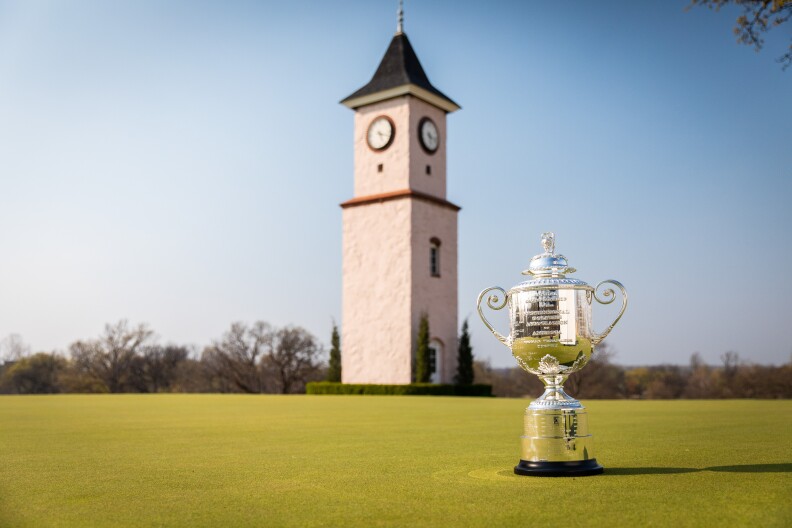
In the mid-1990s, a forward-looking president of the club thought a tower would fit nicely. A design was made and, in typical fashion for such projects back at that time, an influential member was selected to find other members willing to fund the project. Soon after, a clock tower was built just in time for the 1996 Tour Championship. The Clock Tower was first used in a logo for the 2007 PGA Championship, returned as the logo for the 2009 U.S. Amateur Championship, and made a most recent comeback for the 2022 PGA Championship.
So, what once housed the range ball dispensing machine, became the iconic symbol of Southern Hills Country Club.
